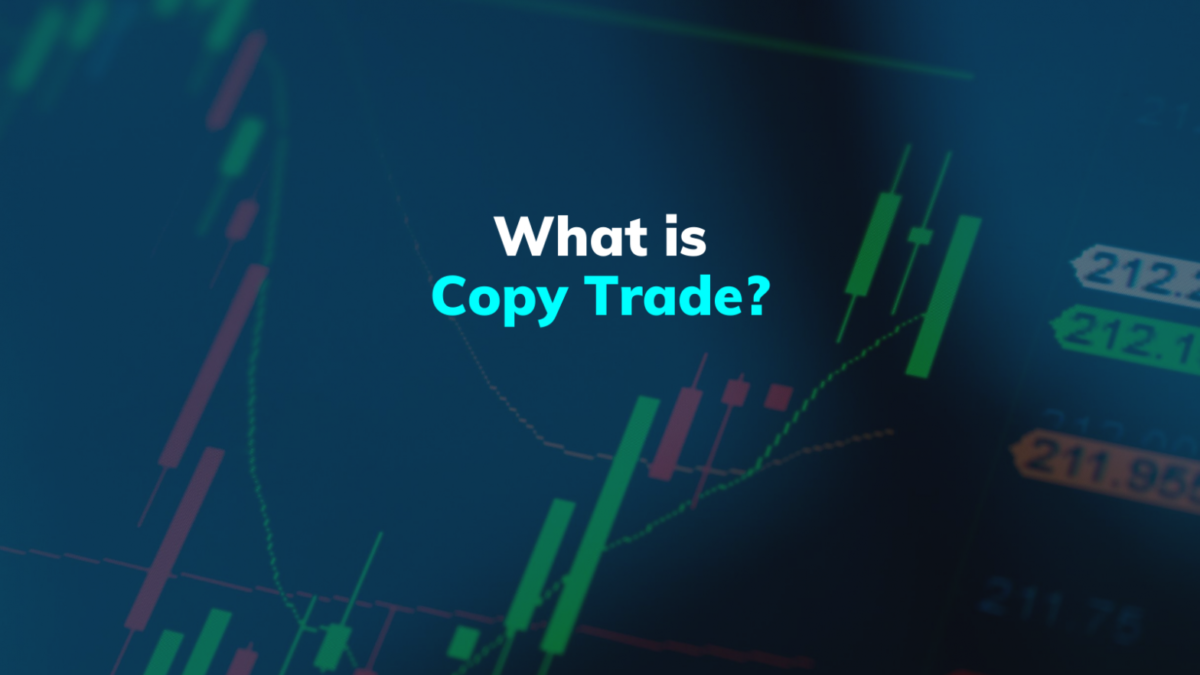
By ATGL
Updated November 29, 2024
Imagine a world where you can invest in the stock market without spending hours analyzing charts and market trends—this is the allure of copy trading. As a revolutionary approach in the trading sphere, copy trading allows individuals to mimic the trades of experienced investors, potentially reaping the benefits without the steep learning curve.
The concept has gained popularity in recent years, particularly with the rise of social trading platforms that facilitate direct interaction between novice and seasoned traders. By understanding how copy trading works and its distinctions from other similar methods, such as social trading and mirror trading, investors can make more informed decisions about their trading strategies.
In this article, we will explore what copy trading entails, its advantages and disadvantages, and provide a comprehensive guide for beginners looking to dip their toes into this dynamic investing approach. Prepare to discover how to navigate the world of copy trading effectively while weighing its potential risks and rewards.
Understanding Copy Trade
Copy trading is an investment strategy where investors replicate the trades of experienced traders. This approach allows individuals to engage in the financial market without needing prior trading experience or market expertise. By choosing to follow skilled traders, also known as signal providers or leaders, investors can automate their trading activity, potentially benefiting from the leader’s expertise and trading history.
Copy trading platforms enable this process by providing tools to connect investors with expert traders. These platforms offer filtering features that help users select strategies based on profitability, risk parameters, and other metrics. Despite offering a way to potentially earn profits, copy trading is not without risks. Market risk, liquidity risk, and exposure to losses remain integral parts of any trading strategy.
How Does Copy Trading Work?
Copy trading can be either partially or fully automated, allowing investors to allocate a portion of their capital to mirror the trades of selected traders. Once linked, future trades by these traders are automatically copied without further manual intervention from the investor. Investors can choose to spread their investment across multiple traders, aligning with different trading styles and risk levels.
Traders who are followed in copy trading may earn compensation through various means, such as subscription fees or spreads from the funds of the accounts that are mirroring their trades. This incentive encourages professional traders to share their strategies and trading signals with followers, hoping for successful trading outcomes that increase their follower base and, in turn, their earnings.
Understanding these mechanisms is crucial for investors aiming to maximize their return on investment while managing risks inherent in the forex or broader financial markets. Copy trading platforms serve as a bridge in this social trading network, effectively connecting amateur and professional traders in a mutually beneficial arrangement.
Social Trading vs Copy Trading
Social trading focuses on the exchange of ideas and market insights among traders. It does not automate the execution of trades, requiring users to manually implement chosen strategies. Conversely, copy trading automates this process, enabling risk adjustments per trade. This feature allows users to tailor their risk management approach, providing more personalized investment strategies compared to simply mimicking another trader’s actions.
Mirror Trading vs Copy Trading
Mirror trading involves following a specific trading strategy or algorithm of a master trader with no modification to position sizes. Traders in mirror trading replicate the exact actions of a master trader, including how much capital is allocated per trade. In contrast, copy trading provides the option to adjust position sizes when copying trades, granting flexibility to investors. Mirror trading is often seen as a subcategory of copy trading, focusing on duplicating a specific algorithmic trading strategy rather than individual trades or decisions.
Benefits of Copy Trading
Copy trading offers a variety of advantages, especially for those new to the financial markets. By mimicking the trades of seasoned investors, it allows individuals without prior trading experience to participate in the forex and other markets confidently. Automation also plays a key role, as it eliminates emotional trading decisions, which are often detrimental to performance. Studies indicate that investors using copy trading achieve success approximately 10% more often than those trading manually. Additionally, learning about trading risk management when investing in a copy trading strategy empowers individuals to protect their capital, helping them mitigate potential losses and improve long-term returns through informed decisions on risk exposure and trade allocation.
Accessibility for Novice Investors
Copy trading is particularly accessible for beginners, making it an excellent starting point for those interested in financial markets. It requires no prior trading knowledge, as users can simply replicate the strategies of more knowledgeable traders. This leads to an enhanced learning experience, where novices can observe when and where to execute trades. Additionally, the social aspect of copy trading platforms enables traders to share strategies and trading education, benefiting beginners immensely.
Time-Saving Benefits
One of the key advantages of copy trading is the time it saves for investors. Instead of spending hours on market research and analysis, users can rely on the expertise of experienced traders, freeing up time for other activities. The process is largely automatic; investors just need to select which traders to follow and set their investment parameters. This minimal effort in trade execution is particularly appealing for those with busy schedules.
Learning From Experienced Traders
Copy trading platforms provide a valuable opportunity for novice investors to learn directly from experienced traders. By observing successful trading strategies, beginners can increase their understanding of market dynamics without requiring deep analytical abilities. Beginner investors can also benefit from learning about technical indicators, as these tools help them understand the strategies being followed, including entry and exit points, and the market trends that more experienced traders are basing their decisions on. Moreover, even experienced traders can benefit by discovering new strategies and trading methods from others on the platform, potentially enhancing their own performance. This mutual exchange of knowledge fosters a beneficial learning environment for all participants.
Drawbacks of Copy Trading
Copy trading is a popular tool in the financial market that allows individuals to replicate the trades of experienced traders with minimal effort. However, there are notable drawbacks associated with this approach that can impact investors in various ways.
Dependency on Traders’ Performance
When you engage in copy trading, your returns are directly tied to the performance of the traders you follow. A profitable past does not guarantee future success, and a once successful trader may start declining soon after you begin mirroring their trades. It’s crucial to choose traders with a substantial trading history and moderate returns to ensure a balanced risk level. Evaluating their trading strategy and risk parameters is necessary to gauge the sustainability of their performance.
Market Risks
Copy trading does not shield investors from inherent market risks such as slippage, rejected orders, and platform outages. During volatile periods, liquidity risk can be a concern if the trades involve instruments with low liquidity. The financial market is unpredictable, and the performance of the copied trades is influenced by various market forces. Consequently, there is a possibility of losing invested capital if market conditions are unfavorable.
Limited Control and Flexibility
Engaging in copy trading means adopting the actions and decisions of the chosen trader, leading to limited flexibility in personal trading activity and strategy. While there is an option to set investment limits or exit copied trades, the overall outcome heavily depends on the decisions of the master trader. This approach restricts the ability to make independent decisions and hinders the potential for gaining deeper market knowledge through personal trading experience.
How To Start: A Beginner’s Guide
To begin copy trading, open an account with a reliable provider. After setting up the account, select a trader to follow by evaluating their trading metrics. Decide on the amount you’re willing to invest, ensuring you’re prepared to risk that capital. The selected trader’s actions will be automatically replicated in your account, potentially allowing you to benefit from their expertise. Copy trading offers a learning opportunity about financial markets, as beginners can observe experienced traders and understand buying and selling dynamics.
How To Select Traders To Copy
When selecting traders to copy, rely on open, customizable online rankings that highlight successful traders based on performance metrics. Review the trader’s statistics, including past performance and drawdown, to assess their risk level and trading effectiveness. Regularly evaluate the traders you follow, maintaining the flexibility to start or stop copying them. This ensures you retain control over your investment decisions.
Best Copy Trading Platforms
Copy trading platforms enable investors to automatically replicate selected strategy providers’ trades in real-time. These platforms usually don’t charge special fees for copy trading, other than standard brokerage fees. Platforms like LiteFinance offer rating systems for evaluating traders based on assets, profitability, and risk. MetaTrader 4 and MetaTrader 5 provide a built-in system that offers detailed information on traders’ historical performance and positions, helping you make informed decisions.
Developing a Successful Copy Trading Strategy
For a successful copy trading strategy, choose truly successful traders to follow. Avoid blindly duplicating trades without understanding the underlying strategies, as this could limit learning and profitability. Consider broker spreads and commissions, which can significantly impact profits, especially with frequent trading. While copy trading provides a good starting point, aim to eventually develop your own trading skills for better financial management and personal growth.
Discover the Best Place To Hone Your Trading Skills
Copy trading offers a unique opportunity for beginner traders to engage in the financial markets with minimal prior experience. By mirroring the trades of seasoned traders, beginners can learn from both their successes and failures. This approach is particularly effective for those who wish to develop their trading skills over time without taking on excessive risk initially.
While copy trading automates most of the process, traders have the flexibility to partially copy trades or make independent decisions based on expert insights. This fosters an environment where skill development occurs naturally, allowing for gradual transition to more autonomous trading practices. Social trading platforms enhance this experience by fostering community interactions, providing access to a wealth of resources and insights.
The ability to observe and analyze the trading strategies of experienced professionals offers a pathway for expanding one’s trading knowledge. While the learning experience may be somewhat limited, the exposure to different trading styles and risk tolerances can significantly enhance a novice’s understanding of market dynamics. This structured environment makes social trading platforms one of the best places to hone trading skills effectively. Join Above the Green Line today and learn how we can help you improve your trading skills.






